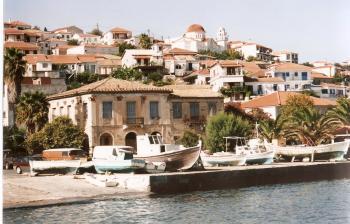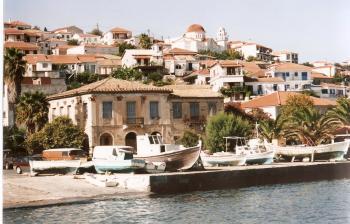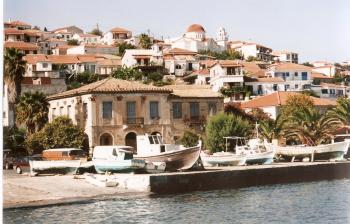On a quest to find Venetian influence in Greece, I traveled to the Peloponnese, Greece’s southern peninsula.
Monemvasia: A Medieval Treasure
My first stop was Monemvasia. Hidden on the slopes of a great rock known as the Gibraltar of Greece, Monemvasia is one of those rare treasures that tourists usually bypass. The entire town is walled and invisible from the shore. The steep rock, crowned with its Venetian fortress, is connected to the mainland by a narrow causeway. Motor vehicles are prohibited, but a minibus takes you free of charge to the old city gates.
Monemvasia got its name, which means “sole entrance,” because the only entry is through a fortified tunnel. As I entered through the thick, stone vaulted gateway I was immediately transported into another age. Narrow cobbled streets wind up the side of the rock. Many of the old buildings are restored in the “new town.” A few are small hotels and there are interesting little shops and cafés. Further up, most of the old town is in ruins, except for a few houses like the home of Yannis Ritsos, who was one of Greece’s most well-known poets.
Known in medieval times as the “Rosemary of the East,” the Venetians called it Malvasia. It became renowned for the excellent wine produced there. The city was occupied by the Venetians in 1417 when inhabitants asked for their help in staving off pirate raids.
When Venetian power began to wane in 17l9, Venice sold Malvasia to the Turks for 30,000 gold florins and the people were forced to relocate. Later, when Turkey declared war on Venice, the city was recaptured. It was the first among the fortified towns of the Peloponnese to be liberated by the Greeks in 1821.



